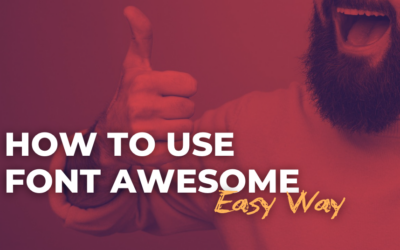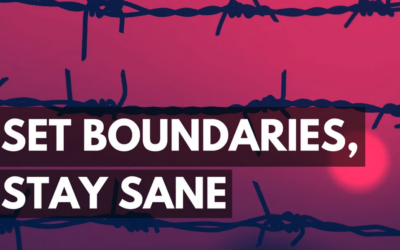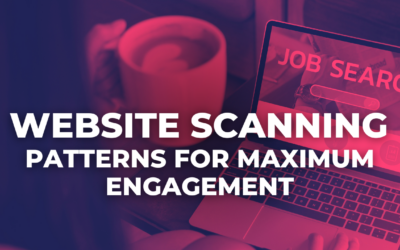This is the first in a series of interviews that we’ll be doing. Focused on design and web professionals, hopefully this will serve as an educational and informative insight into how people work, what inspires them and how they got where they are. We’ll start off with Roger Johansson, of www.456bereastreet.com, web standards and usability expert.
 How or where do you find inspiration?
How or where do you find inspiration?
Mostly by looking at and reading the works of others, both online and offline.
Who is the biggest influence on your work right now?
I can’t say that any one person is influencing me. I’m more influenced by communities, such as the Web Standards, accessibility or JavaScript communities.
Where are your “design roots� Print or Web?
Both. My formal education (well, one of them) is in print design, but I’ve always been interested in designing for digital media. I started out working in multimedia but quickly moved on to the Web. In the beginning I struggled a bit with the lack of control when you design for the Web, but once I learned to embrace that lack of control I felt that it gave me much more freedom.
How important is it to know the history of design?
Not at all, in my opinion. Of course you need to know how design works, but I don’t think you need to know the history of it for that. It can help, of course, but I don’t see it as a necessity.
Serif or Sans?
It depends on the circumstances. If I had to choose, I’d say Sans. Interstate or Myriad.
Do you code and design? Are you a “Hybrid�
I do a lot more coding than graphic design these days. It’s been a gradual change over the years from doing almost only graphic design when I started working with the Web to quite the opposite now. I find it much more enjoyable to let a really talented graphic designer come up with the ideas and then take part in the process of taking that design, refining it, and turning it into a website.
What’s your favorite part of the creative process?
When it’s over! I don’t really like the term “creative process” because it fills me with stress and anxiety.
What makes your creative process different from everybody else?
Compared to most visually oriented designers I think the major difference is that I rarely work in the visual part of creativity. Whatever creativity I have I spend on coming up with accessible and usable HTML, CSS, and JavaScript solutions.
What do you see as the single biggest shift in the evolution of design over the past 5 years?
I’m assuming we’re talking about graphic design for the Web. I think, looking back 5 years, that there are many more graphic designers now who “get” the Web and have learned to embrace and work with it instead of fighting for the position and appearance of each pixel. I’d love to see that shift get taken further though, since there are still far too many visually oriented designers who simply cannot accept the Web for what it is.
What’s the difference between User Experience and User Interface design?
Not sure what the official definitions of the terms are, but to me User Interface design is closely coupled with usability and means making an interface work, both visually and technically. User Experience on the other hand I feel is more of a buzzword used to excuse any kind of intrusive gadgets that the designer or developer wants to use.
What makes one a web design professional?
Besides actually working in the Web business, I think you become a professional when you realise that you’re not designing for yourself or for your clients, but for your clients’ end users, and realise that it means taking usability and accessibility into account throughout the entire design process.
What are designers/developers doing right (or wrong) in the web 2.0 world?
I don’t know what they are doing right really. I don’t think it’s stunning visual design, good usability or excellent coding/programming that makes most web 2.0 sites popular. At least when I look at the few sites I use that would be classified as “Web 2.0”, I don’t see either of those. They’re ugly, hard to use, inaccessible, and badly coded. In general, of course. I’m sure there are exceptions.
What’s your favorite flavor of design or development programs/languages?
Being more of a coder I don’t spend a lot of time in graphics applications. My favourite languages are HTML, CSS, and JavaScript, which I use TextMate and BBEdit to write.
What is your favorite book?
A Short History of Nearly Everything by Bill Bryson
What is your favorite movie?
Bladerunner
Who is your favorite musical artist (or What musical artist are you listening to the most right now?)
Right now I’m listening to Murcof (http://en.wikipedia.org/wiki/Murcof) a lot. My all time favourite is impossible to say. I did write a top ten list of music artists earlier this year.
Roger Johansson is a Swedish web professional specialising in web standards, accessibility, and usability. He also authors the blog 456bereastreet.com.




Nice, thanks for the read UmS, I can’t wait to see more in this series. It’s a nice set of Q n’ A…
I think I would like to know, “What some of these geeks eat for breakfast?”.
I’m a long time fan of Roger’s work, I noticed his particular abrasiveness when referring to the “them” of web2.0 though.
Here’s to a vibrant and engaging Web 3.0 and beyond…!!
@ty: I see what you mean about the abrasiveness of my response now that I read the interview again… I didn’t intend it to be, it just came out that way. Fact is though that there is a lot of room for improvement with regards to web standards, accessibility, and visual design on many “Web 2.0” sites.
Sorry I even mentioned it Roger, I was just feeling the critic in me. I ran right out, and checked out Interstate and Myriad, I don’t currently have either on my machine:(
Thank you very much for doing the interview, and best of luck at 456bereaStreet, I once thought maybe that was in Cleveland, Ohio funny huh.
Nice interview 🙂
It’s strange to see designers by nature slowly cross the border and go to the coding-side. There will always be people who like designing first, and coding second, as well as the other way around. I personally don’t think eitherway is right or wrong… it’s merely a preference imho.
But it’s nice to read interviews like this… it gives you a little insight in the thoughts and beliefs of the designers/coders/bloggers that people read 🙂
Thanks again 🙂
Awesome interview. It’s nice to see UMS expanding its horizons and moving to things other than being a plain showcase. Kudos.